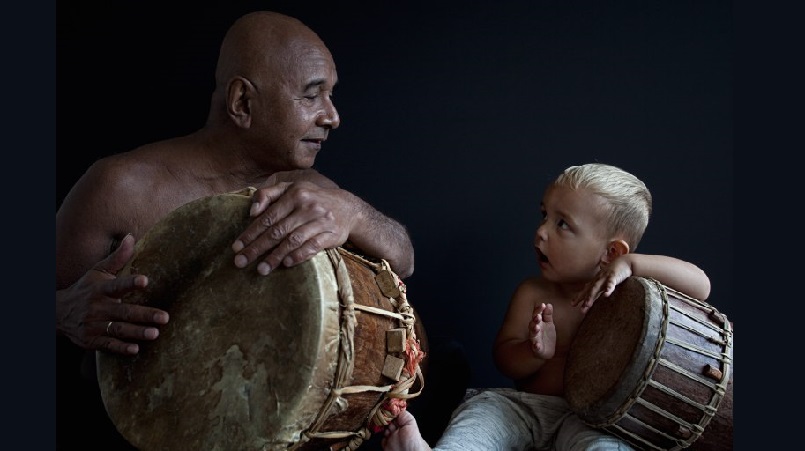
SAMPARI, the name of the morning star in the Biak Island language, is an art exhibition and series of events that celebrate West Papuan cultures and explores the nation’s environment, ecology, politics and history.
The main aim of the exhibition is to raise awareness of the West Papuan peoples wish for independence and right to self-determination.
Jaïr Pattipeilohy’s arresting photograph Cultural transmission (above) is one of thirty-six works exhibited by artists from The Netherlands, America, and Australia, as well as the Melanesian nations of West Papua, Maluku, Solomon Islands, Vanuatu, Fiji, and Papua New Guinea. As well as photography, the works include oil on Belgian linen, oil and acrylic on canvas, archival marker on paper, ink, lino cut print, one computer vector illustration on wood, etch, collage, terra cotta base releif, raw natural objects, macrame, digital art and photography.
DR JOHN BALLARD, Associate Vice-Chancellor (Melbourne) of the Australia Catholic University opened the FEDERAL REPUBLIC OF WEST PAPUA’S second art exhibition in the ACU Art Gallery on 2 December 2016. The popular chief explained how the spectacular artworks assembled in his university’s spacious urban gallery will boost the psychological and physical health of a people who have endured a debilitating racist occupation for more than half-a-century.
The exhibition includes twenty-eight cartoons published after the arrival of 43 West Papuan asylum seekers in 2006. The asylum seekers had beached their double-outrigger canoe at Mapoon on the west coast of Cape York Peninsula on 17 January 2006 with a banner stretched across their prahru SAVE WEST PAPUA PEOPLE FROM GENOCIDE. Immigration Minister Amanda Vanstone believed their claims and issued them protection visas, sparking outrage in Indonesia and a bluster of appeasing strategies and contradictory policies in Australia. President Yudhoyono withdrew his ambassador. Prime Minister Howard tried to excise Australia from ‘designated unauthorised arrivals’ (refugees). It took the prickly neighbours ten months to find a truce, and only then within a formal agreement (The Lombok Treaty) that outlawed the West Papuans’ Morning Star flag in both countries!
The realpolitik behind the Lombok Treaty was artfully captured by cartoonist John Spooner (The things you see by a green light The Age, 9 November 2006). By the time it was signed, ten months after the asylum seekers had landed, twenty-eight other cartoons had been published in the mainstream media, all megaphoning the deep chasm between the Australian peoples’ concerns and opinions and how their politicians were legislating their concerns and opinions.
The most controversial cartoon was BILL LEAK’s, of President Yudhoyono in the guise of a dog mounting a West Papuan; a rejoinder to Indonesia’s FONDA LAPOD’s drawing of Prime Minister Howard and Foreign Minister Downer as copulating dingoes. However, all the cartoonists—Zanetti, Campbell, Pope, Sharpe, Nicholson, Scott, Spooner, Davidson, Kudelka, Dyson, Knight, Ditchburn, Pryor—skillfully captured the capacity of occupied West Papua to expose the enduringly dysfunctional state of relations between Australia and Indonesia.
